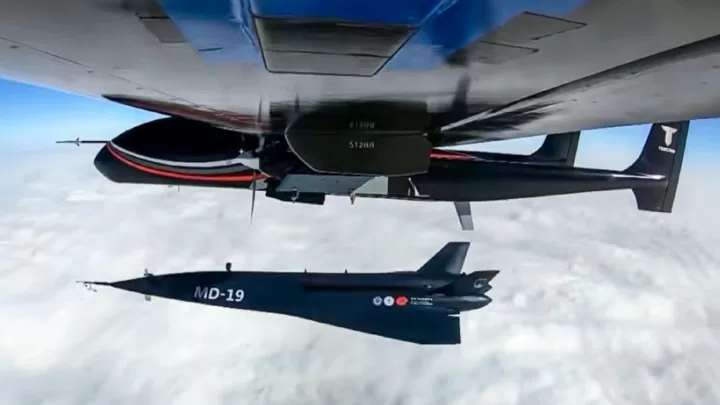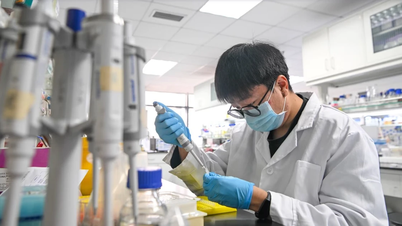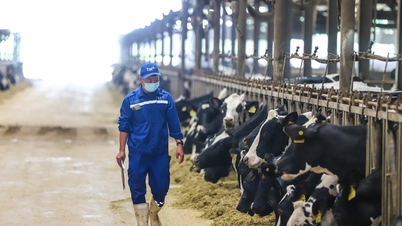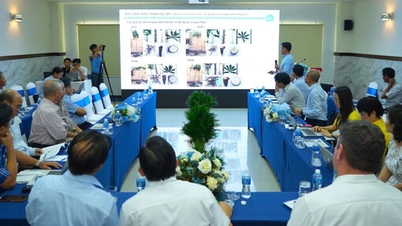The Chinese Academy of Sciences has released for the first time images of the MD-22 supersonic unmanned aerial vehicle (UAV) test.
According to the South China Morning Post on December 18, the Chinese Academy of Sciences for the first time released the test image of the MD-22 supersonic unmanned aerial vehicle (UAV). This is an important step forward in aviation technology, contributing to shortening travel time and enhancing scientific and military capabilities.
 |
| The technical team in China conducted many test flights to refine the design and improve the efficiency of the MD UAV line. (Photo: SCMP) |
The MD-22, part of China's MD UAV series, was launched from a high altitude in the atmosphere using a balloon. During testing, the device reached a speed of Mach 7, equivalent to 8,643 km/h, 7 times the speed of sound, and landed safely, allowing it to be reused.
The MD-22 is the most advanced UAV in the MD series, which was launched at the China International Aviation and Aerospace Exhibition in 2022. This device has a maximum flight range of 8,000 km, a payload of up to 600 kg and is designed to serve aerodynamic research missions, develop high-speed air vehicles and hypersonic missiles.
The project was undertaken by the Qian Xuesen Young Science Mission team of the Institute of Mechanics (IMECH), under the Chinese Academy of Sciences. The birth of the MD-22 marks China's breakthrough in developing hypersonic technology, laying the foundation for breakthrough advances in aviation and defense.
The concept of near-space hypersonic flight was first proposed by scientist Qian Xuesen, known as the “father” of China’s space program. He envisioned an aircraft capable of operating in the region between the normal atmosphere and satellite space, with a mid-air launch requirement for optimal maneuverability.
Tests of the MD, dubbed “long-range vehicles,” have demonstrated superior performance at both high and low speeds, the team said. “We always aim for the best results,” IMECH engineer Li Wenhao said in a video . “ Although these ideas are pioneering, they have a solid theoretical basis.”
The development journey has been fraught with difficulties, with more than 30 design adjustments being made to optimize the model and improve testing. An initial test in 2020 failed due to premature parachute deployment, while a second attempt in May 2021 had to be aborted due to unfavorable weather in the Gobi Desert.
After refining the theoretical model and upgrading the field procedure, the team succeeded in the third test in November 2021, when they recovered the MD-21 prototype aircraft.
Source: https://congthuong.vn/trung-quoc-cong-bo-hinh-anh-thu-nghiem-may-bay-khong-nguoi-lai-364946.html




![[Photo] Binh Trieu 1 Bridge has been completed, raised by 1.1m, and will open to traffic at the end of November.](https://vphoto.vietnam.vn/thumb/1200x675/vietnam/resource/IMAGE/2025/10/2/a6549e2a3b5848a1ba76a1ded6141fae)

































































































Comment (0)